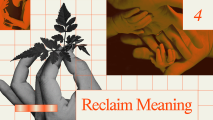Descended from roughly 400 founders and with a proclivity to still marry within the group, the Old Order Amish represent a unique opportunity for genetic research.
This “founder effect” can make specific genetic changes more common among the Old Order Amish than the general population, where they may be rare or essentially non-existent — including variants that may be linked to disease.
By studying this unique population, researchers at the University of Maryland School of Medicine, along with colleagues at UPenn and the National Institute of Mental Health, have identified a specific genetic signature in the Old Order Amish that increases the risk of mood disorders.
Old Order Amish represent a unique opportunity for genetic research. Specific genetic changes can be more common among them than the general population, where they may be rare or essentially non-existent — including variants that may be linked to disease.
“What we knew prior to our study is that genetic factors account for up to 80 percent of risk for bipolar disorder and up to 50 percent of risk for major depressive disorder,” Seth Amet, associate professor of psychiatry at UMSOM and the study’s senior author, said.
In the general population, most people inherit multiple different risk variants, Amet said, and the impact of each is minimal.
“But in the Amish population,” Amet said, “we were able to identify specific genetic variation in four chromosomal regions that double or triple someone’s risk for having a mood disorder.”
What is a mood disorder? Mood disorders are an umbrella term for various types of depression and bipolar disorders, and they impact over 300 million people worldwide.
People with a history of mood disorders in their family have a higher risk of developing them themselves — suggesting a genetic component.
Clues from the Old Order Amish: The researchers discovered previously unknown changes in four regions of the genome linked to an increased risk for developing mood disorders in the Old Order Amish population.
The study, published in Molecular Psychiatry, was drawn from the genomic data of 1,672 Old Order Amish adults, including those from families who had multiple members with mood disorders. To tease out potential genetic signatures for mood disorders, the team used a technique called a genome-wide association study to look for patterns found more frequently in people with mood disorders and their families.
The researchers identified genetic variations in four different parts of the genome, each of which doubled a person’s odds of developing a mood disorder; in each were genes associated with brain development. These variants also influenced other traits, including slower cognitive abilities and “sub-clinical depressive symptoms,” the authors wrote — depressive symptoms that do not quite meet the diagnostic criteria.
Researchers were able to identify genetic variations in four different parts of the genome, each of which doubled the odds of developing a mood disorder.
The patterns provide insight into “how genes impact an individual’s risk of developing a mood disorder or other cognitive traits,” UMSOM dean Mark T. Gladwin said.
“For example, gene network analyses in this study suggest that risk genes impact the formation of synapses in the developing brain, and this may have an additive effect on neuropsychiatric disease risk.”
Why it matters: Importantly, the study does not say “these genetic variations cause mood disorders” — few things in brain science and psychiatry are so pat as that.
But they may “provide insight into the genetic architecture of mood disorders,” the authors wrote, serving as a groundwork for further research — such as better personalized therapies.
And so the Old Order Amish, famed for their dedication to a life more rooted in tradition, may become key players in innovative therapies for the future.
“We are greatly appreciative to the Amish community and research participants who have worked in partnership with our School of Medicine over the past 20 years to help us make important discoveries,” Gladwin said.
We’d love to hear from you! If you have a comment about this article or if you have a tip for a future Freethink story, please email us at [email protected].






